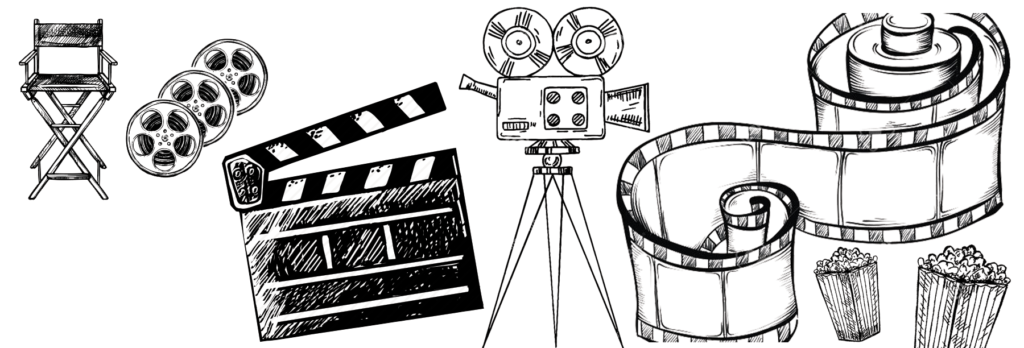Godzilla Minus One
Introduction
Trust the Japanese to excel in the reboot of a product conceptualized and popularized by Hollywood! I must admit that the Monsterverse franchise has really got tiring with the recent film Godzilla × Kong : The New Empire tanking to a point that it did become unintentionally funny for me! The MonsterVerse has never been a universe that I have loved because of the repetitive themes of the monsters coupled with the characters of humans who ate nothing but a group of dimwits committing the same kind of mistakes throughout the franchise. Yet when it did come to Godzilla Minus One, I was keenly awaiting the release of the film that stamped its authority even at the recently concluded Academy Awards by winning an Oscar for Best Visual Effects. This was kind of a huge achievement for a film given that it was an unofficial reboot of a famous franchise while taking the Monsterverse absolutely head-on. And while the film never did get to see the light of the day theatrically in India, the film was finally out on VOD this weekend, and I did grab my chance to watch Godzilla Minus One. So then does Godzilla Minus One manage to impress, let’s find out.
Story & Screenplay
Set against the backdrop of Japan just about finding its feet post the second world war, Godzilla Minus One follows the story of another devastating attack that the people of the country must brace for, when an unknown sea-beast emerges on its shores. Will humanity survive to fight another day? The story here is refreshing given its setting that seamlessly combined a postwar era of Japan and placed it in a sort of a Monster Universe. As a result, the complaint that I otherwise had about the representation of humans in such films, added so much more depth and complications with its dynamics that instantly had me floored with its freshness. If I were to dig in closer, the screenplay standing at just above 2 hours was quite formulaic and did follow the usual beats of a monsterverse film. But a few tweaks with the emotional depth of characters, which by all means would and should drive the narrative forward, elevated the drama to a different wavelength, something that further aided the special effects that were the strongest feature of the drama.
The drama opens in the year 1945, an era which was on the cusp of the culmination of the second world war. There a seemingly deceptive character in the form of the protagonist is introduced, wherein he is accused of bailing out on his group of pilots citing ‘technical glitches’ in his plane. The island where the protagonist finds himself in, is home to a few engineers who are soon attacked by an unknown beast that suddenly emerges from the sea. And even as the protagonist cannot bring himself to shoot the beast(even with a clout of doubt created around the minds of the viewers on whether the beast deserved to be shot without a real counter to begin with), a little skirmish results in the death of all but two men including the protagonist at the hands of the beast, ‘Godzilla’. This opening sequence was well constructed in setting the ball rolling for the rest of the drama to follow.
The usual mistake in all films of the monsterverse has been the lack of world building and characterization, often relying on the twin beasts to do a lot of the heavy lifting along the way. And this is where the screenplay of Godzilla Minus One scores wherein the writers do not wish to introduce another high octane sequence following the opening scebe, instead focusing on building the world and the characters around the protagonist through the postwar era of Japan. The idea here is to delay the inevitable, something that in turn adds depth to the drama. Along the way, the ever shifting geo-political dynamics of Japan with the US and then USSR along with its own set of internal politics of leaving their own people to fend for themselves, forms a vital plot point that unfolds as an undercurrent. This results in a stirling action sequence at the halfway mark that scores not only visually but emotionally as well, even as I found myself uncannily caring for its characters.
The second hour and the events of the second and third acts are more about regrouping, planning and plotting the downfall of Godzilla. This was essentially the limitation of the genre too wherein you could only go so far without getting too conventional with the proceedings. As a result, the events are slightly more cliched and routine although they still manage to hold your attention. The standard twists and turns in the third act featuring a final face-off between the creature and the humans was predictable but also quite gripping, and this is where the visual effects take over the shortcomings of the storyline, leading to a elating finale. The little twist at the end was an interesting one with one of the characters long presumed dead, finds herself on a hospital bed with black marks on her neck(a reference to the G-cells which means this could be a franchise of its own). Overall, the screenplay is really well written and makes for a rather enjoyable and emotional watch.
Dialogues, Music & Direction
The dialogues are conversational but the amount of emotional depth brought in through the lines was so refreshing to witness. The BGM is pretty solid and compliments the vibe of the drama perfectly. The cinematography comprises of the frames that create a trail of the bygone postwar era of Japan really well while expertly capturing the three combat sequences in the film. The camera also successfully pans to capture the emotional depth of the characters that was a major differentiator between this film and the Monsterverse franchise. The VFX and Visual Effects are outstanding, even more so given that the budget of this film was way lower than the Hollywood one. And full marks to the entire team here for some top notch VFX. The editing is crisp and sharp and never really stalls the flow of the drama while also ensuring that the drama doesn’t overstay its welcome. Director Takashi Yamazaki does a phenomenal job in focusing on the world building and characterization that eventually lifted up the drama. The idea was to engage the viewers in the narrative and that could not have been possible just with the VFX. So full marks to the director for adding emotional depth to the proceedings in an overall job done really well.
Performances
The performances are quite good her by the ensemble cast. Kuranosuke Sasaki as Akitsu has his moments to shine. Munetaka Aoki as Tachibana is exceptional to witness. Hidetaka Yoshioka as Noda is brilliant while adding layers of restraint to his character. Yuki Yamada as Mizushima and Sakura Ando as Sumika lend able support. Minami Hamabe as Noriko adds a lot of emotional weightage to her character rather effectively. Ryunosuke Kamiki as Shikishima has the best written role with a proper character arc that was infused with a lot of emotions and the eventual heroism, and he does a pretty good job by effectively nailing the beats of his character.
Conclusion
Godzilla Minus One is an intriguing survival drama sanchwiched between the human versus the monster face-off with an underlying layer of politics, in a drama that comes with my highest recommendation.




